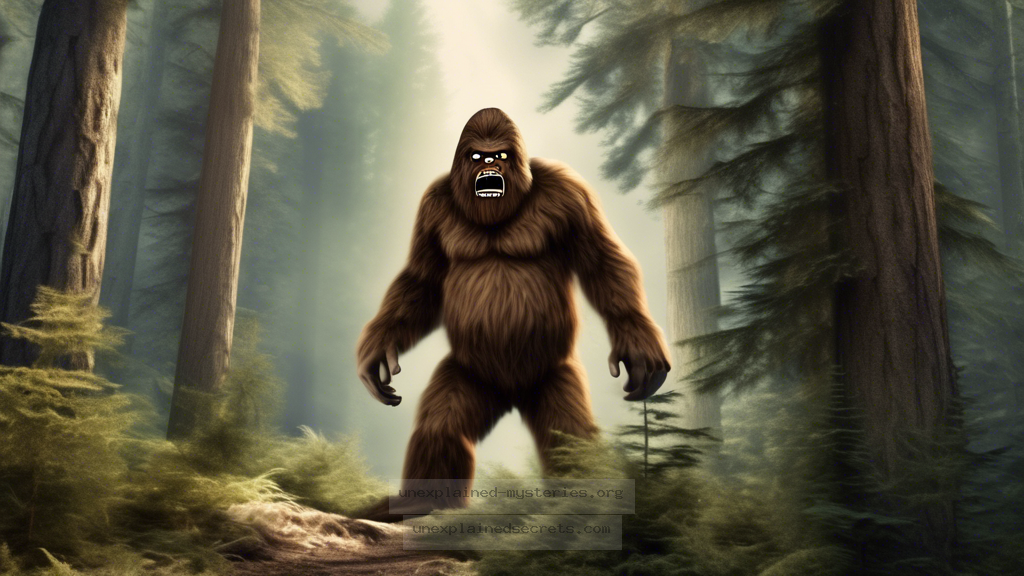What Evidence Exists to Support the Claim That Bigfoot Is a Real Creature?
What Evidence Exists to Support the Claim That Bigfoot Is a Real Creature?
For decades, the enigmatic figure of Bigfoot has captured the imagination of the public and researchers alike. The question of whether this legendary creature is real or merely a product of folklore is one that has fueled debates within cryptozoology, biology, and anthropology. The quest for evidence supporting the existence of Bigfoot is not just a search for a mythical being; it represents a broader inquiry into our understanding of the natural world and the mysteries it holds. This blog post delves into the evidence that proponents of Bigfoot’s existence put forth, examining historical accounts, contemporary sightings, and the scientific scrutiny that accompanies these claims.
Historical Context: The Origins of Bigfoot Lore
The legend of Bigfoot, also known as Sasquatch, is deeply rooted in North American culture and indigenous folklore. Stories of large, ape-like creatures have been shared by Native American tribes for centuries, with many tribes believing in beings that roam the forests, often referred to as “the hairy man” or “wild man.” These tales often serve as cautionary stories meant to instill respect for nature and its untamed aspects. The term “Bigfoot” itself gained popularity in the 1950s, particularly after the publication of an article in the “Humboldt Times” which reported on large footprints discovered in Bluff Creek, California. This incident marked the beginning of a modern era of Bigfoot sightings and investigations, leading to an increased interest in cryptozoology as a field of study.
Core Concepts: What Defines Bigfoot?
Bigfoot is typically described as a large, hairy, bipedal creature standing between 6 to 10 feet tall, weighing over 500 pounds, and covered in dark brown or black fur. Witnesses often report a distinct smell and a low, guttural sound that accompanies its presence. Most sightings occur in remote areas of the Pacific Northwest, although reports have emerged from various regions across North America and even beyond. The core concept revolves around the idea that Bigfoot is a surviving remnant of a prehistoric hominid, possibly linked to species like Gigantopithecus or Neanderthals. This notion raises interesting biological questions about the potential for undiscovered species coexisting with humanity.
Compelling Evidence: Footprints, Hair Samples, and Audio Recordings
Throughout the years, numerous pieces of evidence have been presented to support the claim of Bigfoot’s existence. One of the most compelling forms of evidence comes in the form of footprints. In 1958, Jerry Crew discovered large footprints in the Bluff Creek area, which sparked significant media attention. Since then, field researchers have collected thousands of footprint casts, some of which exhibit distinctive dermal ridges not found in known animal prints.
In addition to footprints, alleged hair samples have been analyzed, with some studies suggesting they do not belong to any known species. Audio recordings, like the famous “Sierra Sounds,” have also been presented as evidence of Bigfoot’s vocalizations, with researchers claiming these sounds do not resemble any known animal calls.
Scientific Scrutiny: The Challenges of Evidence Verification
Despite the intriguing evidence, scientific scrutiny surrounding Bigfoot remains intense. Many researchers argue that the evidence for Bigfoot is anecdotal and lacks rigorous validation. The scientific method emphasizes repeatability and peer review, and thus far, no conclusive evidence has emerged to satisfy these standards.
Footprint casts, while intriguing, can easily be hoaxed, and hair samples often turn out to be from known animals, such as bears. DNA analysis of purported Bigfoot hair has frequently resulted in identification as domestic animals or other wildlife. Furthermore, the audio recordings, while captivating, have not undergone comprehensive analysis by acoustic specialists to confirm their authenticity.
Alternative Perspectives: Skepticism and Hoaxes
Many skeptics argue that the belief in Bigfoot is fueled by a combination of hoaxes, misidentifications, and the human tendency to seek patterns in randomness. High-profile hoaxes, such as the 2008 Bigfoot body hoax by Rick Dyer, have significantly undermined the credibility of the search for Bigfoot. Misidentifications of bears or other wildlife can lead to erroneous conclusions, further clouding the discussion around legitimate sightings.
Additionally, some argue that the notion of a large, undiscovered primate living in North America is biologically improbable, given the extensive human exploration of the continent. The lack of physical evidence, such as bones or remains, is often cited as a critical flaw in the argument for Bigfoot’s existence.
Common Misconceptions: What People Get Wrong About Bigfoot
One common misconception about Bigfoot is that all sightings are hoaxes or misinterpretations. While some reports may indeed stem from individuals seeking attention, many credible witnesses, including law enforcement officers, have reported their encounters sincerely. Another misconception is that Bigfoot is universally accepted in folklore across all cultures; while many cultures have similar legends, the concept of Bigfoot as we know it is primarily a North American phenomenon.
Best Practices for Investigation: How to Approach Bigfoot Research
For those interested in investigating the Bigfoot phenomenon, certain best practices can enhance the credibility and effectiveness of research efforts. Firstly, a thorough understanding of the local wildlife and ecology is crucial. Researchers should familiarize themselves with animal behaviors, tracks, and sounds to differentiate between known species and potential Bigfoot evidence.
Additionally, documenting sightings meticulously, including time, location, weather conditions, and witness testimonies, can aid in establishing a more comprehensive data set. Collaborating with experienced cryptozoologists or joining dedicated field research groups can provide valuable insights and methodologies for effective investigation.
Future Developments: What Lies Ahead in Bigfoot Research?
As technology advances, new tools may provide fresh avenues for investigating Bigfoot. The use of thermal imaging, drones, and environmental DNA (eDNA) analysis could potentially offer innovative ways to gather evidence. The rise of citizen scientists and amateur researchers, alongside professional cryptozoologists, may foster collaborative efforts that yield new findings.
Moreover, the growing interest in environmental conservation and preservation of natural habitats may lead to increased exploration of remote areas where Bigfoot sightings frequently occur. As researchers continue to explore these regions, they may uncover clues that bring us closer to understanding whether Bigfoot is a legend or a reality.
Conclusion: The Ongoing Quest for Truth
The question of whether Bigfoot is a real creature remains an engaging mystery that intertwines folklore, science, and personal belief. While compelling evidence exists, the scientific community remains skeptical due to the lack of rigorous validation and the potential for misinterpretation. Nonetheless, the ongoing interest in Bigfoot inspires exploration and curiosity about the unknown aspects of our world.
As we continue to investigate and debate this captivating legend, it is essential to approach the subject with an open mind, critical thinking, and a respect for both the natural world and the stories that connect us to it. Whether Bigfoot is a reality or a myth, the journey of discovery is undoubtedly worth pursuing.
Other Articles
Recent Posts
- What Happened to Flight MH370? The Conspiracy Theories That Still Haunt Us
- What Secrets Lurk Within the Walls of the Infamous Trans-Allegheny Lunatic Asylum?
- What Evidence Supports the Existence of Bigfoot in the Pacific Northwest?
- What Happened to the Indus Valley Civilization? Unraveling the Mysteries of Ancient Urban Life
- Can Telepathy Be Scientifically Proven Through Laboratory Evidence?







